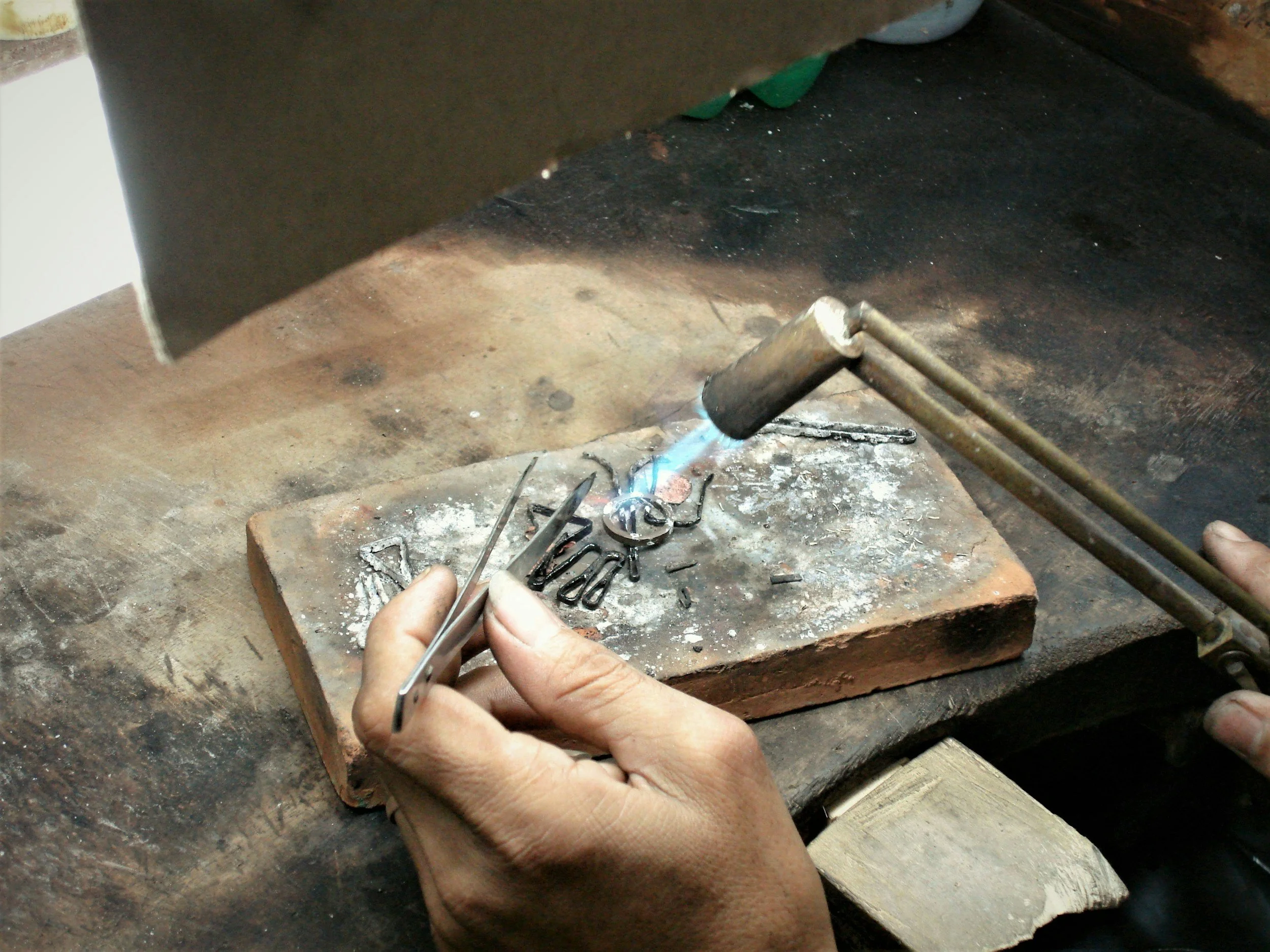The Bench Jeweler’s Path: A Trade Mastering Sentiment, Art, Science, Precious Metals and Gems
The jewelry industry isn't built on one straight path. For many, entry points are family lines—craft passed from generation to generation. Some luck into it through who they know. And then there are those who pursue it relentlessly, driven by fascination with the craft. No matter your starting point, the industry rewards dedication, creativity, and discipline.
Education & Apprenticeship: Where to Begin in The USA
If you're serious about becoming a bench jeweler, here are solid routes to consider:
GIA (Gemological Institute of America) offers top-tier programs in jewelry arts and education—Graduates can earn credentials like Graduate Jeweler or Jewelry Design & Technology certifications. (gia.edu)
Paris Junior College (Paris, TX) runs a respected jewelry technical certificate program. (parisjc.edu)
MJSA Apprenticeship Program—now approved as a U.S. Department of Labor National Guidelines Standards model. It’s a 50-week structured curriculum that, when paired with classroom or in-house training, can be registered for tax credits and support. (mjsa.org)
New Approach School for Jewelers (Tennessee) – Offers intensive, hands-on programs in stone setting, repair, and advanced bench techniques, designed to fast-track skills with real-world application. (newapproachschool.com)
Scholarships & Financial Support
Costs can be a barrier—but there is help:
Jewelers of America (JA) offers scholarships for bench jewelers and professionals via its Seymour & Evelyn Holtzman Bench Scholarship and partnerships with GIA, AGS, and other certifying bodies. (Jewelers of America)
MJSA Scholarships support students pursuing jewelry careers—one award grants a free MJSA student membership on top of financial aid. (mjsa.org)
GIA Scholarships & Financial Aid—including federal financial aid for eligible on-campus programs (but not all), plus private scholarships like AGS Member Scholarships, the Clear Cut fund, Women’s Jewelry Association (WJA) diversity scholarships, and Lonia Tate scholarships with internship opportunities. (GIA, blackinjewelry.org, WJA, Clear Cut, AGS)
AGA (Accredited Gemologists Association) awards gemology scholarships globally based on need and merit. (Accredited Gemologists Association)
The Bench Jeweler’s Life: Detailed Work, Physical Demand
Bench jewelers are the quiet backbone of a jewelry store—people often don’t see or understand what they do. From polishing, resizing, casting, stone setting, to CAD work—bench jewelers blend artistry and engineering in equal measure.
The job requires long hours bent over a bench and fine motor control—your hands take the toll. Ergonomic tools, microscopes, proper lighting, and regular stretching help a lot.
At a boutique like Croft & Stern, gemological knowledge isn’t optional—we work regularly with high-value gems and emotional heirlooms. That stone literacy matters. In more traditional shops, deep gemology knowledge may not be mandatory.
This field is a mix of mechanics, art and science. Today’s bench jewelers often need skills across repair, casting, and CAD, as well as an understanding of gem properties.
Day-to-day as a bench jeweler requires patience and precision. Here’s what really fills the day:
Stone setting – everything from prong tightening and bezel work to pavé and channel setting. Most of a jeweler’s time is spent making sure gems are secure and properly presented.
Sizing and repairs – bread-and-butter work. Resizing rings, re-tipping worn prongs, fixing chains, replacing clasps, polishing out wear.
Fabrication and assembly – soldering, laser welding, casting, building settings or small parts, assembling multi-piece jobs.
Finishing – endless polishing, buffing, rhodium plating, and making sure a piece actually looks like fine jewelry when it leaves the bench.
Problem solving – a lot of jewelry repair is “figure it out” work. Odd breaks, inherited pieces, or jewelry in need of refurbishment. A jeweler constantly improvises within their skill set.
Tool upkeep – sharpening gravers, changing burs, maintaining torches and flex shafts. Dull tools make bad work.
Equipment and shop maintenance – keeping polishers, air compressors, dust collectors, ultrasonic cleaners, steamers, lasers, 3D printers, and casting machines running smoothly. Repairs and calibration are part of the job.
Cleaning – not just jewelry, but the bench and shop itself. Polishing compounds, metal filings, and dust add up fast; jewelers clean to stay organized and recover precious metal scrap.
Time management – repairs and custom jobs pile up fast. A bench jeweler has to juggle multiple jobs at once and hit deadlines.
Learning curve – even the most seasoned jewelers run into new alloys, treatments, or quirks. It’s a trade where you’re always still learning.
A Lifelong Trade: Keep Learning or Fall Behind
Jewelry is a trade, not just a job. You can build a career over decades—but it takes effort:
Continuous learning is non-negotiable. Every piece, every challenge teaches something new.
Personal motivation and discipline matter more than credentials alone. Hone your craft, seek mentorship, and always aim to improve.
In short: Getting into the jewelry trade takes a mixture of connections, schooling, hands-on training, and drive. The payoffs? Working with meaningful, beautiful materials, solving craft challenges, and building something timeless—every single day.
School vs. Mentorship: Finding Your Path
Formal jewelry school gives you a structured foundation—you learn the correct techniques, terminology, and theory behind bench work, stone setting, casting, and gemology. However, real-world situations often require adaptation: every shop has different tools, clients, and workflow demands.
An apprenticeship with a master jeweler offers hands-on experience in the field, but keep in mind you’ll often be learning that jeweler’s personal methods, which may not always be the “textbook” way. The advantage is seeing the day-to-day realities of running a jewelry bench.
Ultimately, the best path combines both: start with formal schooling to build a strong foundation, then work alongside a seasoned master jeweler to refine your skills and navigate real-world challenges. This approach ensures you develop both technical excellence and practical expertise.



